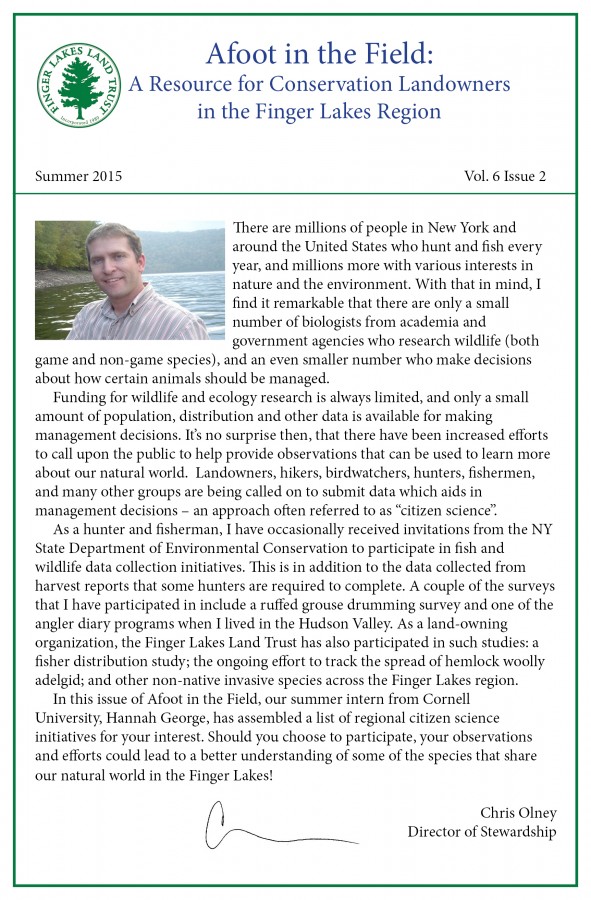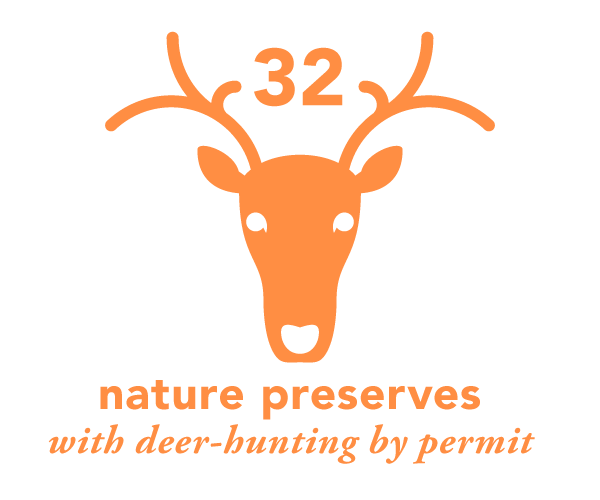Download: Afoot in the Field, Volume 6, Issue 2 (PDF)
Published Summer 2015
FROM THE INTRODUCTION:
Given the millions of people in New York and around the United States who hunt and fish, and millions more with a general interest in nature and the environment, it is somewhat remarkable that there are really only a small number of biologists from academia and government agencies who research wildlife (both game and non-game species), and an even smaller number who make decisions about if and how certain animals should be managed.
With funding for wildlife and ecology research always limited, and a relatively small amount of population, distribution, and other data available for making management decisions, it’s no wonder that there have been increasing examples of landowners, hikers, birdwatchers, hunters, fishermen, and other groups from the public being called on to help provide observations and data that can be used to learn more about our natural world and help make management decisions – an approach often referred to as “citizen science”.
As a hunter and fisherman, I have occasionally received invitations from the NY State Department of Environmental Conservation to participate in fish and wildlife data collection initiatives. This is in addition to the data collected from harvest reports that some hunters are supposed to complete. A couple of the surveys that I have participated in include a ruffed grouse drumming survey, and one of the angler diary programs when I lived in the Hudson Valley for a time. As a land-owning organization, the Finger Lakes Land Trust has also participated in such studies, most recently a fisher distribution study, and the ongoing effort to track the spread of hemlock woolly adelgid and some other non-native invasive species across the Finger Lakes region.
In this issue of Afoot in the Field our summer intern from Cornell University, Hannah George, has assembled a list and summary of various public participation, or citizen science, initiatives that folks in the region may have an interest in participating in. Who knows – your observations and efforts just might lead to a better understanding and refined management of some of the species that share our natural world in the Finger Lakes!
Download: Afoot in the Field, Volume 6, Issue 2 (PDF)
You can download Afoot in the Field, our biannual stewardship pamphlet for landowners, in PDF format. See all issues here.


